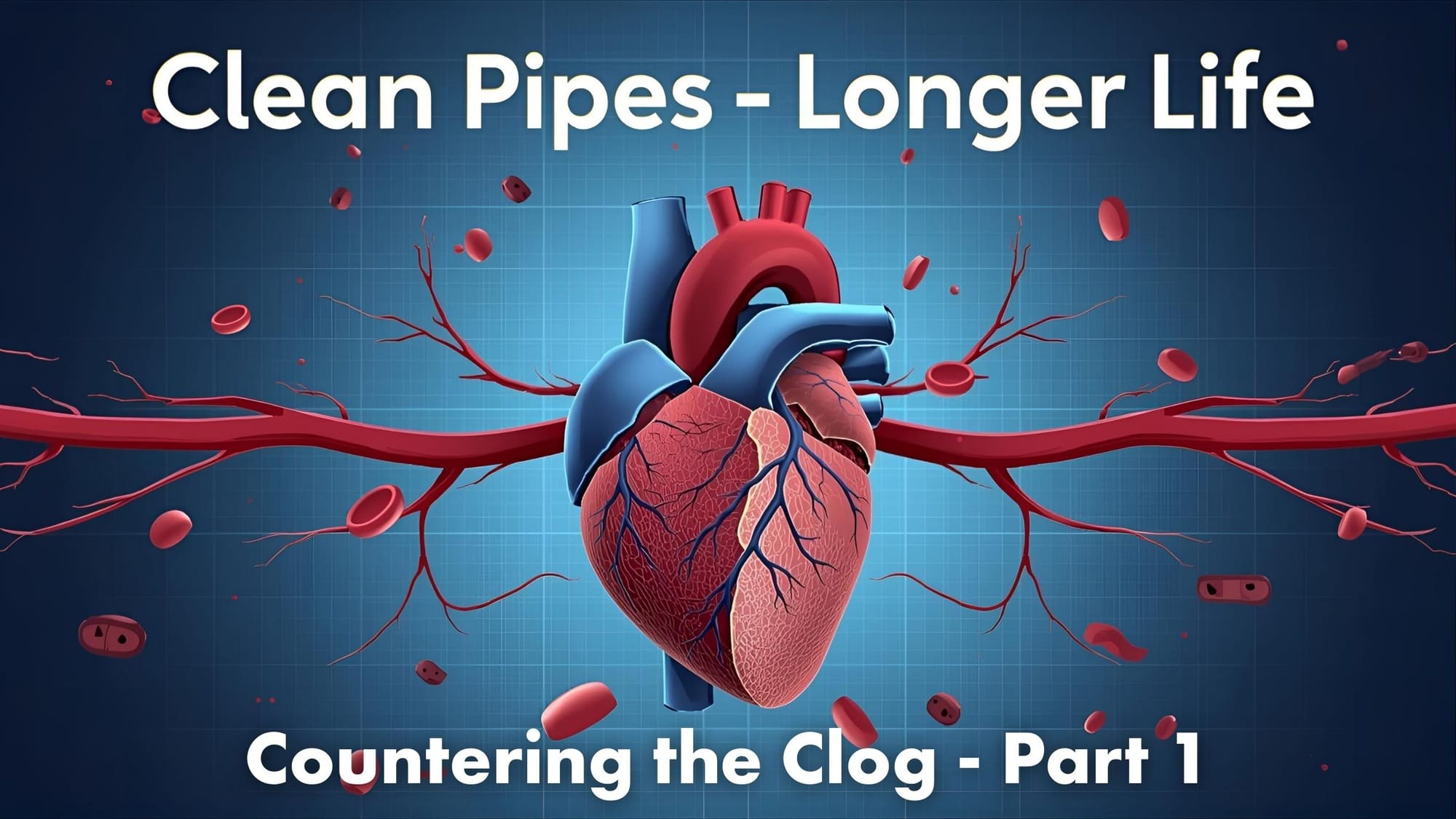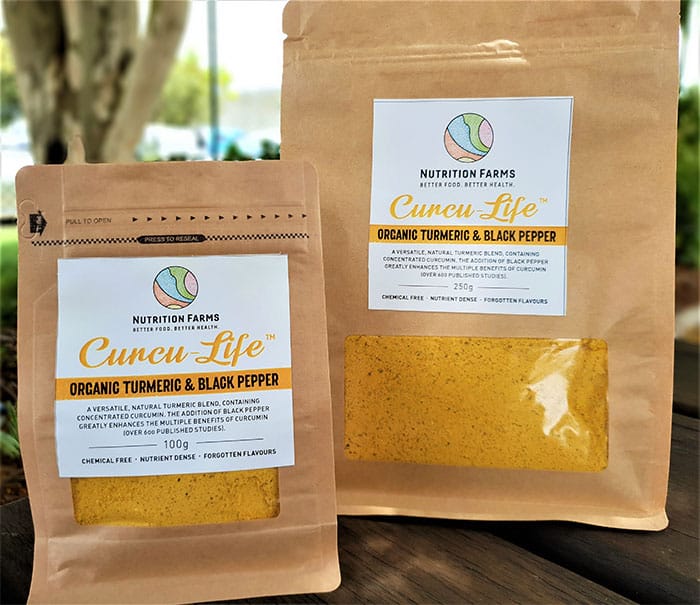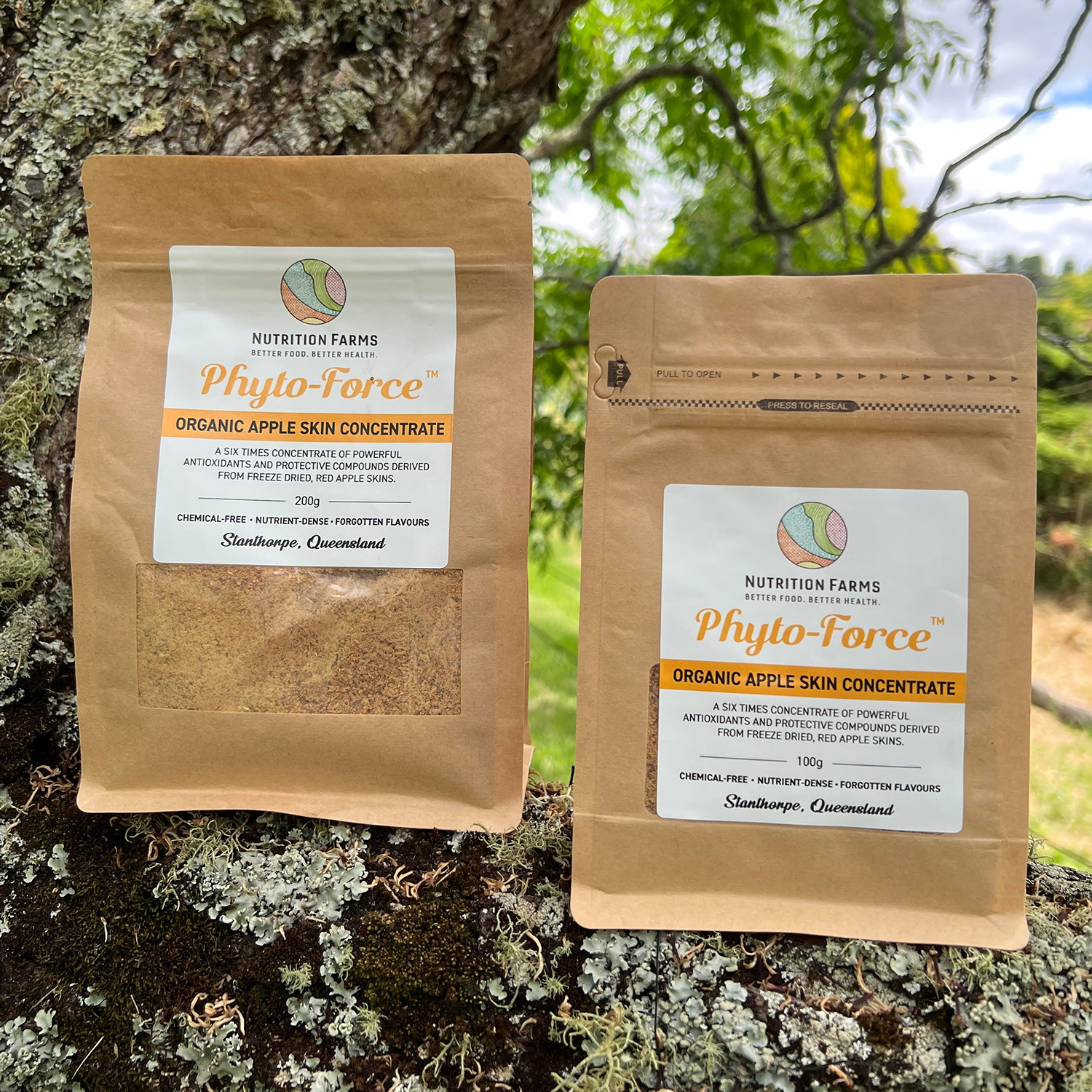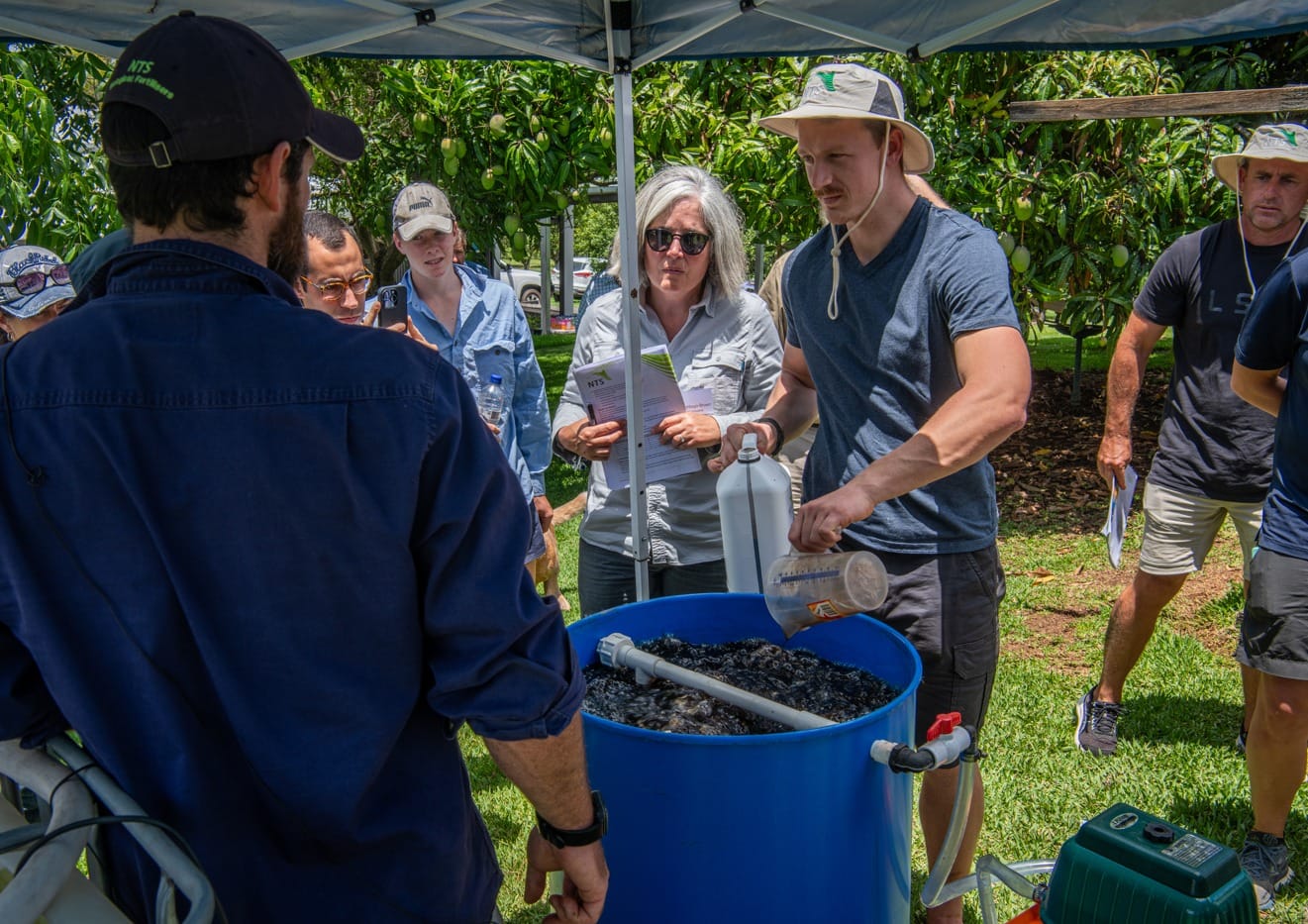Clean Pipes - Longer Life 🫀

Countering the Clog 💚- Part 1
By Graeme Sait
Nutrition Farming is an integrated, holistic approach, where your health is considered to be as important as the health of your soil, crops, and livestock. In this 2-part article, I will be focusing directly on pump maintenance and clean pipes. I am, of course, referring to heart health, and it’s vitally important, considering the fact that coronary heart disease remains our largest killer. Let’s begin by looking more closely at this wondrous pump that begins service three weeks after conception and ceases that service the day we die.
This relentless, 300-gram organ pumps around 6000 liters of blood each day, supplying nutrients, messenger molecules, enzymes, and oxygen to all of our ten trillion cells. It also helps to remove waste products like carbon dioxide as our cells breathe.
This blood pump needs a vast network of pipes to facilitate this delivery and removal process. It’s a bit like fertigation. Just as we must keep the irrigation pipework clean and fully functional, there is a need for a similar focus on our blood vessels. This complex network of arteries, veins, and capillaries involves around 100,000 km of pipework. Both the pump and the pipework require servicing to ensure function. While blocked pipes in the field can be a nuisance, the liability becomes a little more serious when we talk about blood vessel blockages.
I guess we also need to talk about obesity in relation to heart health. Maybe you are unaware that every kg of excess body mass requires up to 500 km of increased blood vessel length. This increases the workload of the heart, and it invariably increases blood pressure. There is also a much higher likelihood of oxidised LDL and plaques associated with being overweight. It’s pretty basic: the crap food that made you fat also clogs your pipework.
So, let’s look at the various traumas that can compromise this pipework. The biggest cause of clogged pipes is fibrinogen and plaque deposits, and we will discuss these shortly.
However, there are other players like Advanced Glycation Endproducts that can also deposit in arteries and reduce cardiovascular health. The acronym for this particular pipe clogger is AGE, and this is ironically appropriate, as it is a large part of the disease called aging.
Then, there are oxidised proteins that can adhere to the pipework. The worst of these is oxidised LDL. Toxins and bad microbes, including Covid, also create further pipework traumas, and then there are the margarine and destructive cooking oils. Let’s look at each of these, beginning with fibrinogen.

Countering the clots.
Fibrinogen is an important blood-balancing substance that is required for blood clotting and wound healing. We are equipped with genes that are upregulated or activated in the presence of inflammation. These genes trigger the production of fibrinogen when it is required to counter inflammation. It’s a critically important part of the healing process. When we have an imbalance in our inflammatory response, the associated accumulation of fibrin can create chaos. This insoluble fibrous substance can be a major cause of blood clots associated with strokes and heart attacks, but there also appears to be a link to cancer and neurodegenerative disorders. The most significant meta-analysis of the link between accumulated fibrin and heart disease and stroke involved 154,211 subjects from 31 different studies. The link was profound and undeniable.
Thrombosis, which is when clots block blood vessels, is a major player in heart attacks and strokes. Arterial thrombosis is about the formation and rupture of atherosclerotic plaques, which we will discuss shortly. However, it is blood clotting in the veins that is linked to fibrin deposits.
Venous thrombosis is linked to blood imbalances and endothelial dysfunction, often driven by inflammation. Obviously, it would be best to reduce the root cause of inflammation, but we can also treat symptoms and seek to minimise fibrin deposits by improving a natural enzymic breakdown process called fibrinolysis.
Then there is the cancer link to fibrinogen. High readings of fibrinogen have been associated with cancer development and progression for decades. In fact, this excess is now seen as a prognostic tool for identifying survival rates.
Now, let’s look at fibrin and the brain, as well as central nervous system disorders like Alzheimer’s and multiple sclerosis. Both appear to be linked to disturbances in the blood-brain barrier linked to inflammation. That can trigger fibrin deposits that, along with other players like amyloid plaques and tau proteins, can mess up neuronal messaging and seriously destroy the quality of life for entire families. I watched my Dad succumb to the nightmare that is Alzheimer's, and I would not wish the “great forgetting” upon anyone. I feel that all of us should explore tools to reduce the likelihood of a plague disease now impacting one in four people over 65 in the Western world.
As I mentioned, one tool to explore is the use of fibrinolytic supplements. It makes sense that fast-tracking the dissolving of clots linked to heart disease, stroke, cancer, and neurodegeneration would be a very productive wellness strategy.

The Plaque Paradox
OK, let’s now talk about arterial plaque, how it is formed, and how it can be countered.
This substance is the primary cause of the hardening and narrowing of the arteries, so all of us should understand how it works. Essentially, it is a buildup of fatty deposits, LDL cholesterol, calcium, and other substances that can reduce blood flow and increase the risk of heart attack and stroke.
Here’s the plaque paradox. Saturated fat has been demonised in relation to the fatty deposit component of this phenomenon, and hence we have seen the massive increase in consumption of margarine and partially hydrogenated vegetable oils as a supposedly “healthy” alternative. In fact, these oils are not a good alternative. They are widely overused and abused in processed food, to the point that even your breakfast cereals are laden with this toxic material. It might sound extreme, but it really would be a good proactive health strategy to check the labels before you buy to reduce the likelihood of feeding this substandard food to your children.
An increasing body of research suggests that these junk oils and margarine comprise a substantial component of the fatty deposits in plaque. The Low-Density Lipoprotein (LDL) component of your cholesterol is much smaller than HDL, and hence it has more surface area for oxidation.
We now understand that the trans fats in junk oils and margarine can increase levels of oxidised LDL and its likelihood of depositing on artery walls.
Where there’s smoke, there’s fire, and too much of the long-chain fatty acids, like palmitic acid, can accumulate in the arteries as plaque. This is the dominant fat found in beef. It is an important substance that is critical to brain and heart health, but, as with many things, an excess becomes a serious liability. That excess can very often come from eating feedlot beef. This meat production system produces similar amounts of palmitic acid but substantially less stearic acid, compared to the grass-fed alternative. Stearic acid has been shown to reduce the likelihood of raising cholesterol levels, and it can counter some of the negatives associated with other saturated fats.
This feedlot beef is marketed as a superior option, but this is far from the truth. It contains much less nutrition, and it contributes to the inflammatory component of CHD, stroke, diabetes, and Alzheimer’s because it is also dominated by omega-6 fats. These are the inflammation builders in a two-part inflammatory cascade that is balanced out by the omega-3 fats. These omega-3s are the building blocks for the anti-inflammatory stage of the process. This critical balance involves 2 parts omega-6 to 1 part omega-3 fats. In Australia, that ratio currently sits at 20:1, and in the US, it bounces to 26 to 1. What happens when you have ten times more inflammatory influence than you should have? This is part of the inflammation link to multiple degenerative diseases! Feedlot cattle are similarly inflamed due to this grain-fed omega-6 emphasis. Understand that Omega-6 comes from grain, and Omega-3 is found in much higher concentrations in grasses. When the health of grain-fed animals is compromised, there is a greater need for chemical intervention, and then we get to eat the residues of the antibiotic storm that follows.
Obviously, if there is a strategy that can help cleanse our pipes of this plaque buildup, it should be embraced.

Reducing AGE and living longer
OK, let’s look now at Advanced Glycation Endproducts (AGES) and their impact on arterial health. So what are AGES? They are proteins or fats that have become glycated as a result of exposure to sugars. This is something we should all strive to understand because AGEs are a key marker for the development or worsening of some of our most destructive degenerative diseases. These include diabetes, Alzheimer’s, atherosclerosis, heart disease, high blood pressure, chronic kidney disease, and premature aging. That’s a fairly large percentage of the things that most commonly kill us. One particular study, for example, involved 559 older women. It was found that those with the highest blood levels of AGEs were almost twice as likely to die of heart disease compared to those with the lowest levels.
So what is glycation? This process takes place when sugars like glucose and fructose form non-enzymatic bonds with proteins and fats. This cross-linking produces glycotoxins called AGEs that can begin accumulating in early adulthood. Obviously, if you are knocking back sodas jampacked with high fructose corn syrup, you are increasing the likelihood of this toxin accumulation. The simple fact that we consume an average of 70 kg of sugar per person per year heralds a vast over-consumption that sponsors this destructive accumulation. Type 2 diabetes is now called the coming plague, because as many as one in three of us are now considered pre-diabetic. Type 2 diabetes is characterised by AGE accumulation, resulting in tissue and cell damage and pervasive inflammation of major organs, including the brain. While an oversupply of the white poison is a big player, there is also a powerful link between food preparation and food processing and AGE accumulation.
Dry heat is the culprit here. The process of browning or blackening food is called the Maillard Reaction. Unfortunately, this creates the delicious barbecue-style tastes and aromas, so it can be a major sacrifice to modify the way we cook food. I remember visiting Cuba some years back with expectations of delicious, spicy Caribbean-style food. It was hugely disappointing to be repeatedly served up boiled chicken and beans. It was a dead-boring diet, but perhaps there was some traditional nutritional wisdom behind the blandness. Mind you, I strongly suspect they don’t actually live longer; it just feels like they do as they slowly succumb to boredom, he! he!
The Maillard reaction is bad news. A 2010 study published in the Journal of The American Dietetic Association found that food produced through dry heat like frying, grilling, or roasting contained high levels of a particularly toxic form of AGEs called carboxymethyllysines or CMLs.
Milk is an obvious candidate for glycation, as it contains a rich load of fat, protein, and sugars. The heat involved in pasteurisation destroys the enzymes responsible for digesting this complex food, and it compromises the vitamins that are linked to calcium uptake. However, studies reveal that the heat also creates a four-fold increase in carboxymethyllysines (CMLs). Sounds like a good reason to seek out raw milk if you are able.
Dry heat can increase the AGE component of food from 10 to 100 times that of the original raw food, so our cooking choices are no small thing. Our bodies are equipped with mechanisms to remove AGEs as they are formed or consumed, but when we overdo the sugars or fried food, that system is overwhelmed, and the oxidative stress and inflammation begin.
There are some good studies highlighting the foods to avoid and the foods to embrace, but my standout favourite is a 2013 paper called "Advanced Glycation End Products in Foods and a Practical Guide to their Reduction in the Diet" by Dr Jaimie Uribarri and some of his colleagues. You can check it out in full on PubMed, and I seriously suggest that all of you would benefit from reading this excellent paper. In fact, it could be life-changing.

AGEs are naturally present in uncooked, animal-derived foods with their high fats and proteins, but their numbers explode when we roast or fry these foods. AGEs are much lower in plant-based foods, but roasted nuts can definitely be an issue. The modern diet is packed with AGEs in the form of processed food, fast foods, and heat-damaged oils found in so many foods. The findings from multiple human and animal studies have clearly demonstrated that avoidance of dietary AGEs or dAGEs, as they are termed, can be a super productive strategy to delay chronic diseases and aging.
Let’s now look at the levels of dAGEs in food, and I promise you, you will not like some of this news. I know this research will have quite an impact on my food choices in the future. The measurements are based on kilo units per 100 ml.
Corned beef, which of course is boiled, is just 200 kU/100 ml, while fried steak is over 10,000 kU/100ml.
Chicken breast steamed in foil for 15 minutes was a little over 1000 kU/100 mL, while crumbed, deep-fried or roasted chicken was almost 10,000 kUs/100. A tenfold increase.
However, the biggest horror story is that aromatic breakfast favourite, bacon. We were recently warned by WHO about the nitrates in bacon and their proven relationship to cancer, but now we have another nail in that coffin. That crunchy taste treat when fried in its own fat for just five minutes contains 90,000 kUs per 100 grams. Not good news for some of my Dutch agronomist friends who pile the plate with bacon rashers each morning.
Lamb is the best of the red meats with fried chops chiming in at around 2500 kU/100mls. Fish suffers a similar fate to the other animal protein sources based on how we cook it. Salmon steamed for 8 minutes in tin foil measured around 1000 kUs/100 mls, while whiting crumbed and baked measures 8700 kUs/100mls.
Eggs were a wake-up call for me, as fried eggs are invariably added to the bacon, avocado, and tomato on my sourdough toast. A fried egg measures 2700 kUs/100mls, while a poached egg cooked just below simmer for five minutes measures just 90 kUs/100mls. That’s 30 times less, and I actually prefer poached eggs.
When we take a look at our most popular vegetable, a steamed potato comes in at just 17 kUs per 100 mls, while McDonald’s French fries are over 2500. Pizza, the favourite takeaway option, comes in at a worrying 6800 kUs/100mls. This is a bit of a concern because most people consume a whole pizza rather than a slice, so it is a big hit of glycotoxins.
The most popular grain is rice, and our Asian friends got it right on this count, with boiled rice scoring under 100.

Countering the negatives
So, is there any way we can have our cake and eat it too? If we consider it too big of a sacrifice to give up roasted, grilled, and fried meats, is there anything that can counter these destructive accumulations?
Well, one trick is to marinate meats with vinegar or lemon juice for an hour before cooking. The acidity appears to reduce the formation of AGEs. In fact, in one study, the AGEs content was reduced in fried steak by over 50% after a 60-minute lemon juice marinade.
Slow cookers are the absolute champions of AGEs reduction in terms of cooking strategies, but stews and soups are also good. It looks like I will be pulling the old Crock Pot down from the top shelf in the pantry, as I am now convinced that I have been overdoing the fried foods to my very likely detriment.
There are also some supplements that can reduce the formation of AGEs, and one of these is the wonder spice, turmeric. Indian cuisine certainly nailed it with slow-cooked curries and rice with turmeric, ginger, and black pepper, boosting nutritional value.
At this point, I feel obliged to mention my product, Curcu-Life, which is a freeze-dried concentrate of nutrient-dense turmeric from Nutrition Farms. This product also has a 9% black pepper additive to magnify the uptake and utilisation of the curcumin component. You can source it online via our web shop.
Polyphenols are the other nutrients well-researched to help slow the formation of AGEs. Again, I must sing the praises of our new product made from the skins and cores of Nutrition Farms' apples. PhytoForce is a freeze-dried, super-concentrated source of several of the most productive polyphenols researched for this purpose, including resveratrol and chlorogenic acid. It can be sprinkled over meats or included in sauces that can reduce the formation of AGEs during cooking.
The other key strategy to reduce the negative effects of AGEs is autophagy. This natural cleanup system is now considered to be amongst the most potent anti-aging tools. This process can be amplified with intermittent fasting because it only kicks in after 14 hours of zero protein, fats, or carbohydrates. 16:8 fasting is a wonderfully beneficial practice in which you complete your last meal of the day at 6:30 p.m. and recommence eating at 10:30 a.m. the following morning.

During that fasting period, you can have water, herbal teas, or black coffee, but no food or sweets at all. The last 2 hours of that daily fast are when the action happens. There is some compelling research on the benefits of brain autophagy, where protein deposits in the brain can be cleared to improve the messaging of neurons and associated brain health. However, it has also been shown to be a highly effective technique to counter the ravages of AGEs.
In part two of this important article, we will take an in-depth look at the potential of proteolytic enzymes as powerhouse pipe cleaners.
Until then, I wish you all the best for spring planting, and may the rains fall where they are most needed.
Cheers
Graeme
Curcu-Life
Turmeric contains curcumin, a phytochemical generating huge excitement in the integrated medical community. There have been more than 600 published papers describing the multiple benefits of this natural substance in relation to many of our major degenerative diseases. Curcu-Life™ contains nutritionally grown, freeze-dried turmeric with black pepper to greatly enhance the multiple benefits of curcumin.

Phyto-Force
Unleash the Power of Antioxidants with Phyto-Force.
Transform your morning routine with this nutrient-dense, freeze-dried, red apple skin powder. Elevate your breakfast smoothie or cereal with a teaspoon of concentrated anthocyanins, quercetin and other potent antioxidants.
In fact, you will receive the equivalent antioxidant power of a full punnet of blueberries in just one tablespoon!
Red apple skins are amongst the highest food sources of quercetin, a multi-function marvel that is an anti-inflammatory, antioxidant, and immune booster, with links to improved circulation and associated heart health.

To order or learn more, call NTS on (07) 5472 9900 or email sales@nutri-tech.com.au.
Certificate in Nutrition Farming

Our next iconic, five-day Certificate in Nutrition Farming® course is scheduled for Monday 27th - 31st October 2025.
Our last course was attended by growers and consultants from six countries. It was a wonderful learning opportunity where attendees enjoyed a wealth of education and inspiration from both our presenters and their fellow attendees. We only accept 40 bookings for these courses, so please register if you would like to attend.

